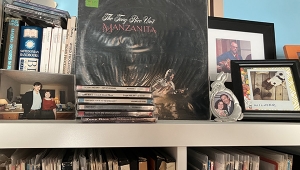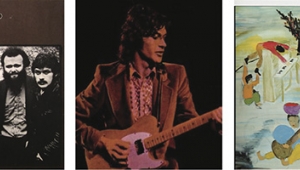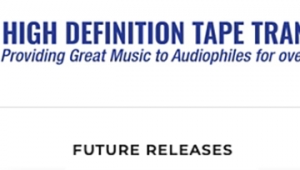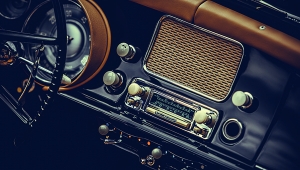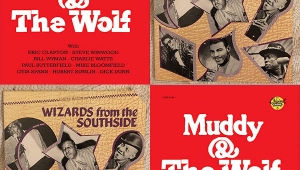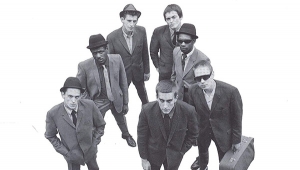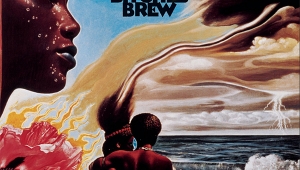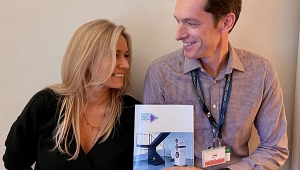| Columns Retired Columns & Blogs |
Joan Osborne's Musical Talisman
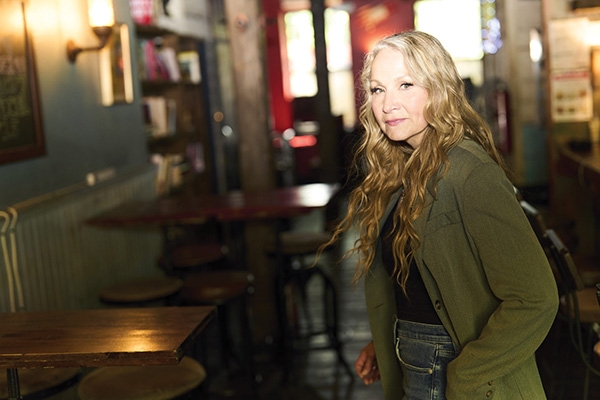
Photo by Laure Crost
We all have at least one cherished album that takes us back to the exact time and place we first heard it. Whenever we hear any of the music from that special album—regardless of whether it occurs months, years, or even decades later, of whether we hear it in the grocery store, on a car radio, or on a friend's playlist—we instantly reconnect with the feelings the music originally evoked within us.
We audiophiles may even get nostalgic about the format we first spun that album on and the equipment we played it through most often. And then we might wonder, "Do I still have that LP in my collection?," followed by, "Isn't that old Technics SL-1200 turntable somewhere in the attic?"
Some of my old gear is boxed up in an offsite storage space, but almost all of my old LPs are within reach. I can reconnect with them and how they make me feel in a flash, with the drop of a needle.
I'm not alone. One kindred spirit is soulful singer/songwriter Joan Osborne. Her talisman LP is 1965's The Sound of Music: An Original Soundtrack Recording (RCA Victor). The gear she played it on incessantly growing up was an of-the-era all-in-one console her parents had in their Kentucky home.
"Yeah, we had one of those big console stereos," Osborne recalled in an interview, "and ours was set against a wall. It was very close to my dad's little wet bar he had set up in that fabulous 1960s way. The console stereo had a giant speaker that was closest to the wet bar. If I sat next to the speaker with my back against the wall, and I opened one of the lower cabinet doors of his wet bar, I could make a little box that I would sit inside. In there, I could listen to the Sound of Music record over and over and over again, and I'd sing along with it. I thought I was invisible in that little box I made for myself. I thought nobody could hear me, either."
Not content to only sing those well-loved Sound of Music leads, Osborne took on other vocal roles each time the record cued up. "I would pick a different character to be every time, and I would sing the part of that character's harmony as I listened to it," she said. "When the album was done—both sides—I would flip it over back to the A side, and I'd pick another character to be. Most of the time, I was Julie Andrews, but other times I would be other characters too. Sometimes, I would be Kurt." (footnote 1) It's fun to think about how lush-harmony songs like "Do-Re-Mi" and "Edelweiss" sounded in the voice of a very young Joan Osborne.
That experience has long been incorporated into Osborne's musical DNA. That's apparent in both her vocal delivery and her repertoire choices over the course of her 30-years-plus recording career. If you think in these terms, you may detect traces of Charmian Carr (footnote 2) in Osborne's Top 10 hit single "One of Us," from Relish, her 1995 major-label debut (Blue Gorilla/Mercury P2-26699), or discover Julie Andrews's storytelling channeled into several of the 13 covers on 2017's Songs of Bob Dylan (Womanly Hips WHRV001). Viewed through that lens, Osborne's acoustic-driven reads of "Masters of War" and "High Water (for Charley Patton)" display extra cross-decade gravitas.
Osborne's early, makeshift isolation booth served as a blueprint of sorts for the approach she took with her most recent album, Nobody Owns You (Womanly Hips, WYHP 2), her eleventh, released in September. This excellent, poignant voice-and-acoustic-guitar–driven album plays as a paean to lost time, lost life, and lost memory.
Upon aging out of her Sound of Music–cabinet period, Osborne took the next big step. "When I used to babysit, the first big purchase I made with my babysitting money was a Radio Shack Realistic turntable," she recalls (footnote 3). "But I didn't have any records to play on it, so I bought the Eagles' Their Greatest Hits (1971–1975), and I bought a Cher record. It was the one with the cover where she had on an amazing outfit—a crazy bikini and a giant headdress with antlers coming out of it (footnote 4). My older brother had started borrowing some records from a friend of his, so I listened to Sly and the Family Stone, Elton John's Greatest Hits, the Beatles' White Album, and John Lennon's Shaved Fish. You know, for a kid who was 13 years old in Kentucky, that music was pretty mind-blowing."
Years later, The Sound of Music enabled Osborne to bridge a generation gap. "When my daughter was little, we used to watch [the movie] together a lot," she said. "Back in the spring, we both got COVID, and while we were sitting around on the couch, we were like, 'Let's watch The Sound of Music again!'—so we did."
Osborne would love to pay that mother/daughter bonding experience forward in a Rocky Horror Picture Show kind of way. "What I'd like to do sometime is go to one of those singalong screenings where everybody knows all the music, and we all get to sing The Sound of Music together," she says. "It would be a lot of fun." That would be a surefire way to keep that sound we know so well in our heads—to ensure that our talisman music continues to come alive for us whenever we need it to.
Footnote 1: Julie Andrews played Maria in the film and sang that character on the soundtrack album. Duane Chase played and sang as Kurt von Trapp.
Footnote 2: Charmian Carr played and sang as Liesl von Trapp.
Footnote 3: These days, Osborne does her vinyl listening with a vintage Sony turntable.
Footnote 4: 1979's Take Me Home on Casablanca Records.
- Log in or register to post comments




